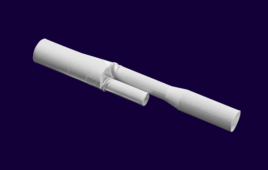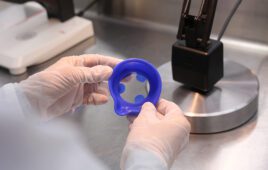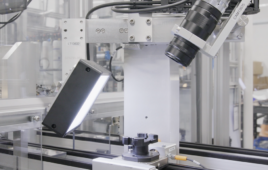
by Joe Pleshek, President and CEO of Terso Solutions
As of 2018, the medical device market has grown to a $423.8 billion dollar industry and is expected to grow to $521.64 billion by 2022. With over 6,500 medical device companies and a growing amount of inventory being transported in the field on a daily basis, gaining real-time visibility of inventory is necessary. Mounting regulatory standards, demand, costs, and inefficiencies are all driving the industry toward a much-needed change for inventory management, specifically field inventory.
While many solutions exist for managing critical supplies, a fully connected, smart inventory management system presents the most proactive solution for automating inventory management. Connecting assets using IoT technology enables medical device manufacturers and hospitals alike real-time information throughout the supply chain, thus better meeting customer demands, improving patient safety, meeting regulatory compliance standards, and accurately monitoring temperature and expiration dates. All resulting in a much better outcome for suppliers and providers.
The Current Inventory Landscape Is Not Sustainable
 The term “medical devices” covers a wide variety of items, from a simple pair of sutures or a wheelchair to pacemakers and vascular grafts. All of which are essential to providing uncompromised patient care for healthcare organizations across the U.S. Be it a small rural clinic or a nine-hundred-bed hospital, medical devices are a major part of the healthcare industry. The U.S. Department of Commerce estimates that the US medical device market has grown to $423.8 billion. Currently, there are over 6,500 medical device companies that supply innovative products and services to over 6,000 healthcare provider locations in the U.S. Through the growth and evolution of this significant market over the past 50 years, the importance of having the right instrument or implant at the right place at the right time is increasingly critical. Unlike the retail sector where a stock-out usually means a lost or delayed sale, a stock-out within the health industry results in a much worse outcome, and must be avoided at all costs, as this puts patient safety at risk and seriously jeopardizes the relationship between the healthcare provider and supplier.
The term “medical devices” covers a wide variety of items, from a simple pair of sutures or a wheelchair to pacemakers and vascular grafts. All of which are essential to providing uncompromised patient care for healthcare organizations across the U.S. Be it a small rural clinic or a nine-hundred-bed hospital, medical devices are a major part of the healthcare industry. The U.S. Department of Commerce estimates that the US medical device market has grown to $423.8 billion. Currently, there are over 6,500 medical device companies that supply innovative products and services to over 6,000 healthcare provider locations in the U.S. Through the growth and evolution of this significant market over the past 50 years, the importance of having the right instrument or implant at the right place at the right time is increasingly critical. Unlike the retail sector where a stock-out usually means a lost or delayed sale, a stock-out within the health industry results in a much worse outcome, and must be avoided at all costs, as this puts patient safety at risk and seriously jeopardizes the relationship between the healthcare provider and supplier.
To prevent this, medical device manufacturers have developed numerous, often complex, supply chain and distribution models. These traditional models often rely on the sales representative or inventory specialist delivering the product to the hospital on the final mile of its journey. The result of this intricate network to get a product to the right place at the right time results in a continuous buildup of inventory in the field.
Field inventory represents the process of inventory from the point of manufacture or main distribution center to the point-of-use. Too often, field inventory ends up in forward stocking locations (i.e. trunks, homes, on consignment at hospitals, or in-transit between any one of those locations). In some cases field inventory is cycled quickly, arriving to the final destination via a sales representative for a specific procedure then sent back to a central distribution center immediately after. In other cases an implant can sit as consigned inventory at a hospital for years.

To date, the challenge for field inventory management has been visibility. In the majority of instances, once product leaves the manufacturing facility or main distribution center its location and status can only be determined by manual efforts.
Traditionally this involves customer service calls to a sales representative inquiring about a particular piece of inventory. Rather than view inventory in real-time as it moves through the supply chain, medical device companies scramble to avoid stock-outs and reconcile actual demand from current inventory, while also ensuring they are in compliance with increasing regulations.
An independent healthcare industry consultant recently studied the inventory patterns of 49 publicly traded manufacturers of medical devices and instrument products. The median number of days in inventory was 137, meaning that a great deal of high-valued inventory is floating out in the field for half a year or more on average. At a time when there is increasing pressure on margins and efficiencies, the glut of inventory in the field emphasizes the problem. The highest number was 400 days, meaning that the manufacturer has more than one year of inventory out in the field, a likely red flag for financial auditors and investors alike. Not to mention, this increases the threat of expired product circulating in the field with the potential to be used in a procedure.
If a company with $1 billion in sales cannot account for nearly half of its field inventory, auditors will want proof that the inventory is real and will likely require monthly sales audits, resulting in additional time and expenses.
The old adage “if it’s not broken, don’t fix it” has applied to the medical device industry for years. However, the research and current landscape show that the way inventory is managed is, in fact, broken. Approaching this problem in a proactive way is the best solution to a market that has continued to operate in a manual, reactive manner. The growing levels of field inventory has created serious challenges for stakeholders in the healthcare community, including:
Read more of this whitepaper at Terso Solutions’ website.
Sponsored content by Terso Solutions




